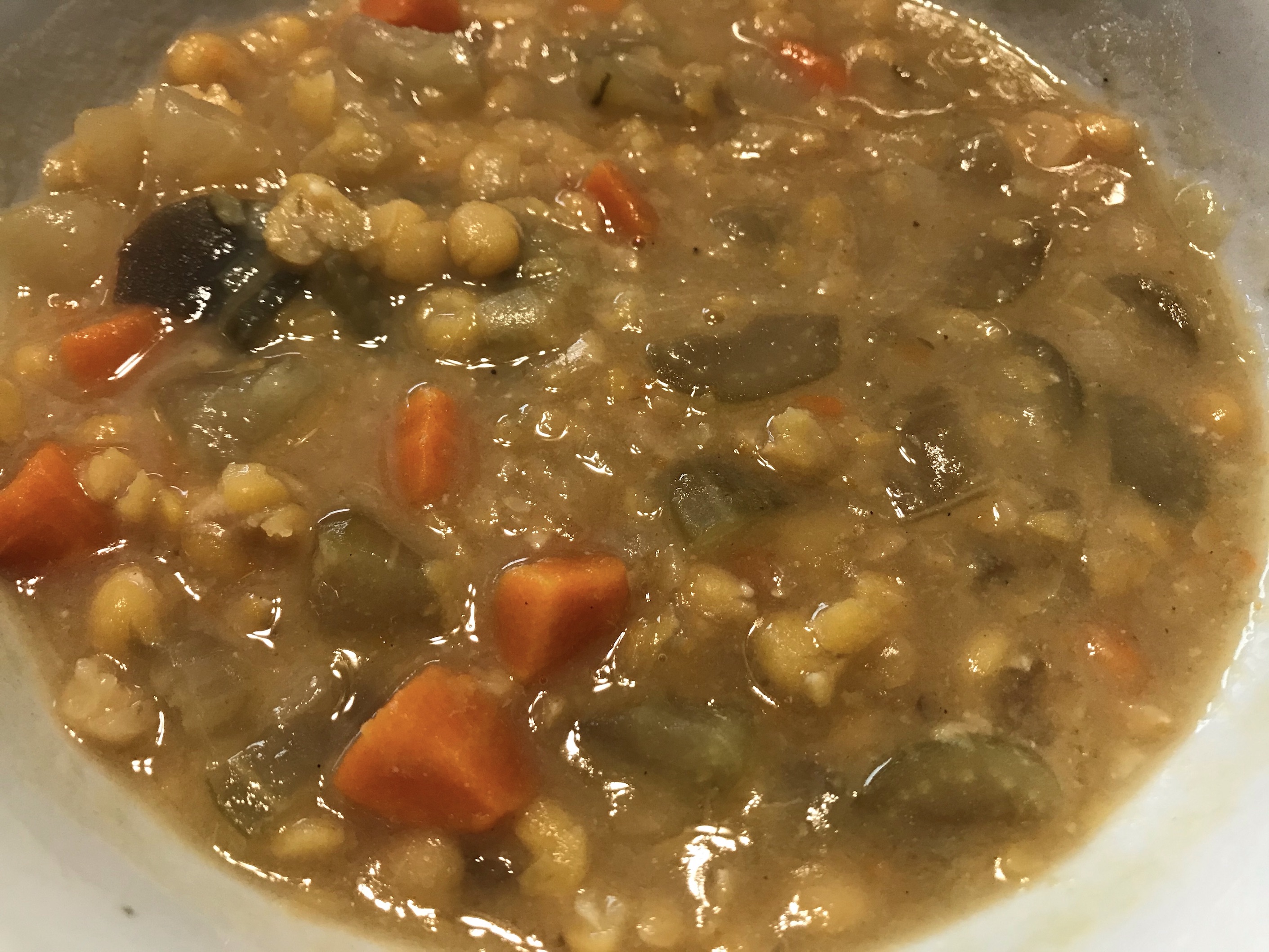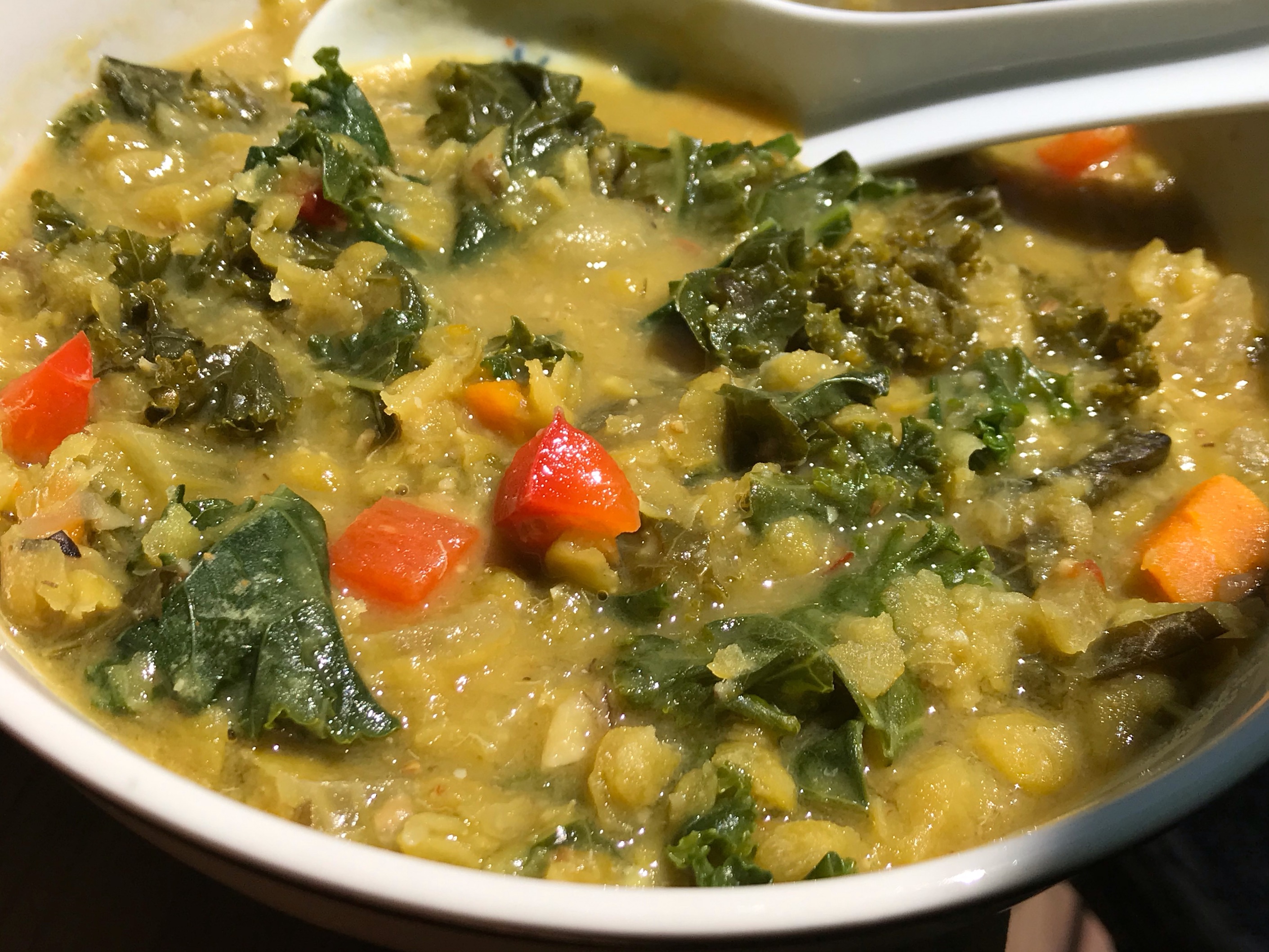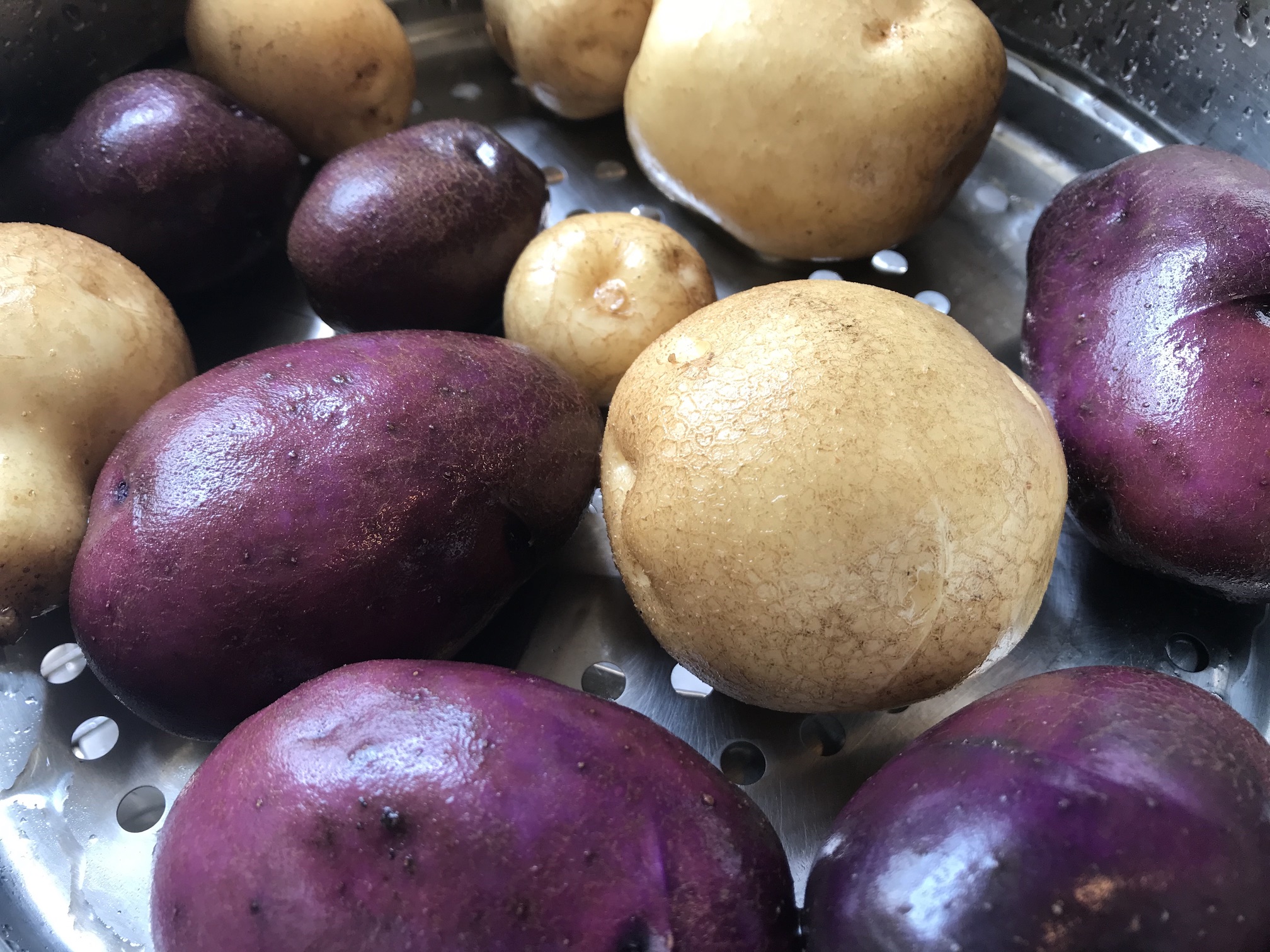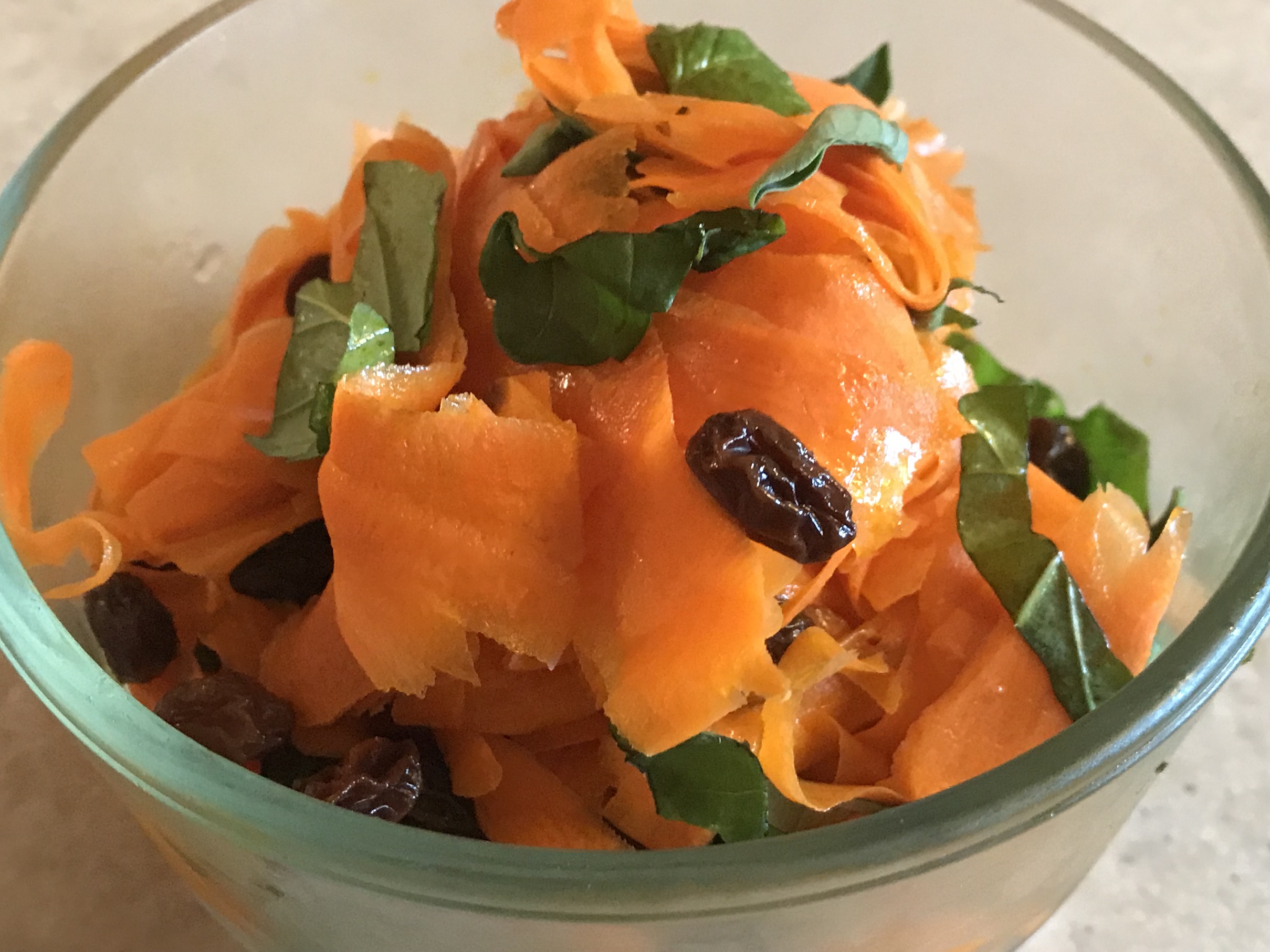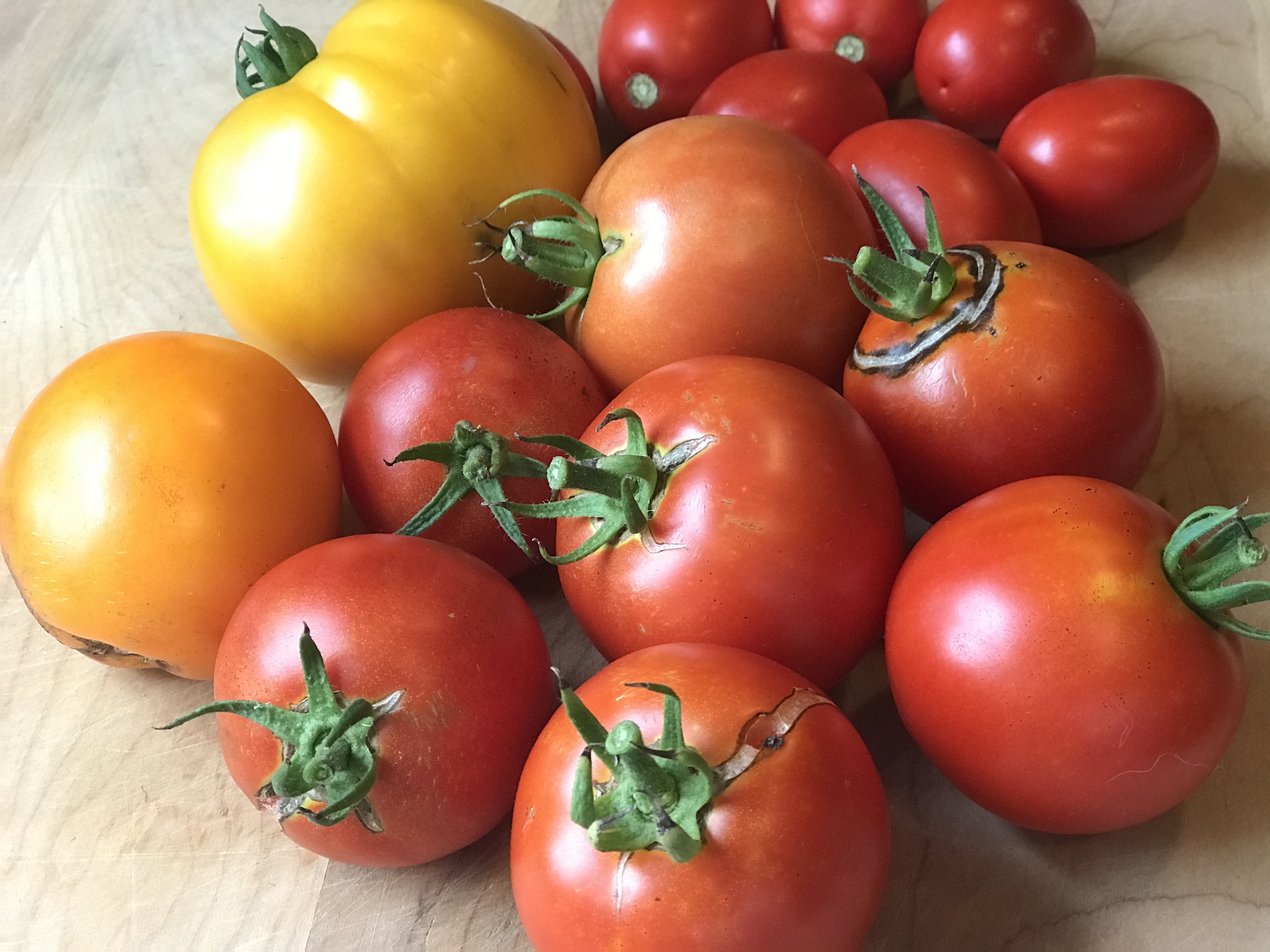Simple Japanese Dashi Broth, Miso Soup and
The Health Benefits of Seaweed
This Simple Japanese Dashi Broth is my main go-to broth for a fast way to create a flavorful soup stock to use as a base for soups or other dishes.
Dashi Broth is typically made using only 2-3 main ingredients. I explain the health benefits of those ingredients, the best sources, and how I modify my Dashi Broth ~ along with soup recipes, below.
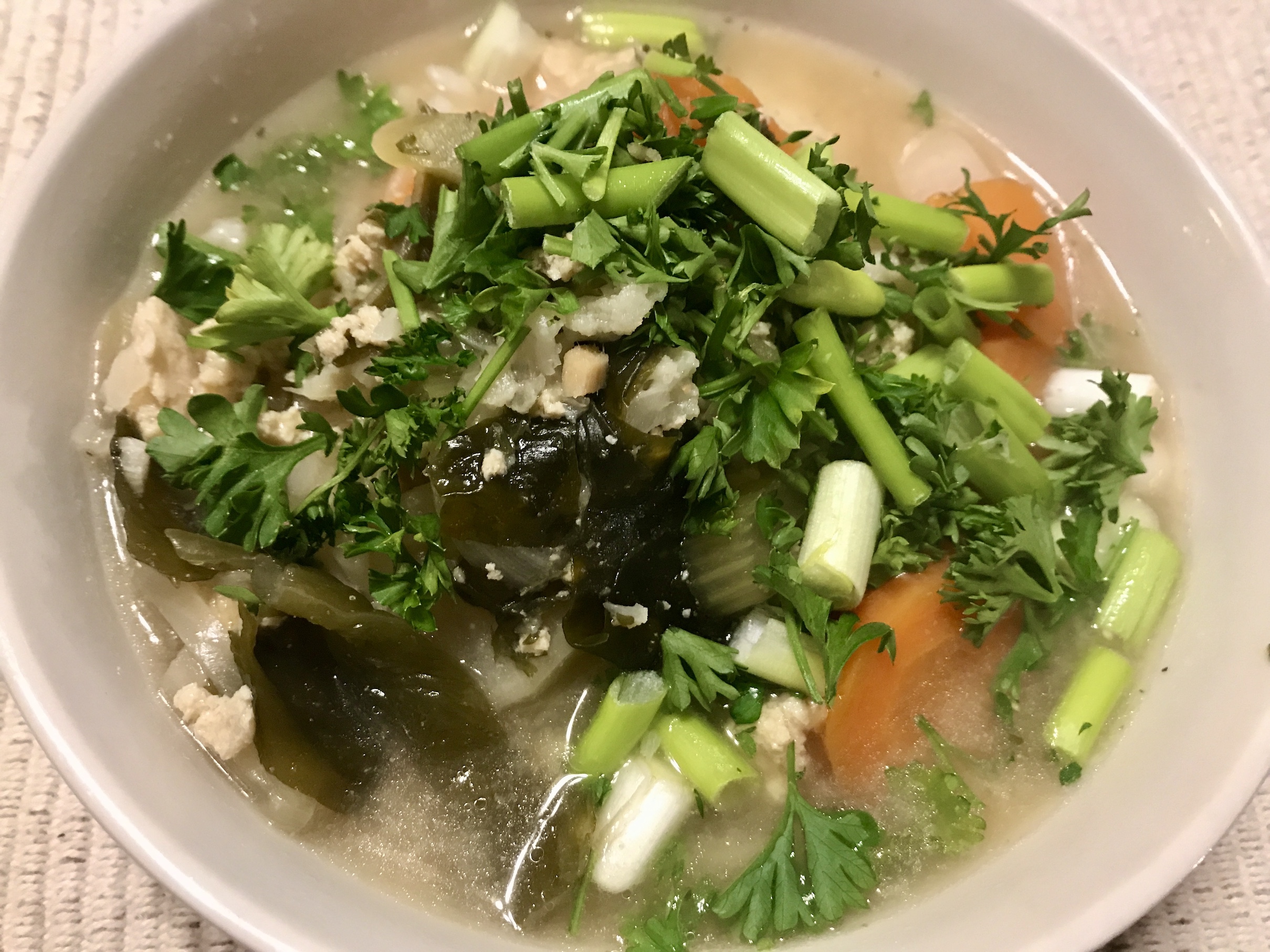
- Home
- Meal Prep / Batch Cooking Tips
- Best Brown Rice, Rice Balls, Sushi & Porridge
- Japanese Dashi Broth & Miso Soup
What Is In a Simple Japanese Dashi Broth?
Dashi is a traditional Japanese stock, and is considered central to Japanese cooking. It adds flavor to miso soups, noodle soups, and many other Japanese dishes.
The main ingredient in a typical Simple Japanese Dashi Broth is Kombu or Kelp seaweed. Regularly cooking with seaweed is a great way to boost minerals in your diet which benefits your hair, skin and nails, and may have protective benefits against chronic disease.
Kelp and especially kombu contains glutamic acid which produces the highly coveted 'umami' flavor.
I also like to add a couple dried shiitake mushrooms and ginger to my Simple Japanese Dashi Broth.
Bonito flakes, made from small fish like sardines or other dried fish are sometimes added to traditional Japanese Dashi broths. I used to keep bonito flakes around to help entice Jasper to eat her food during her late stage of kidney failure, as she was losing so much weight. She would cry out for food, but not find much appetizing, apparently common for this condition. The fishy aroma of bonito flakes sprinkled on top of her regular food provided some help in getting her to eat more.
Bonito flakes add a salty, more savory somewhat richer flavor to a simple Japanese Dashi Broth, however, I do not add any as they are not vegan.
Seaweed Health Benefits ~
The Star Ingredient in a Simple Japanese Dashi Broth
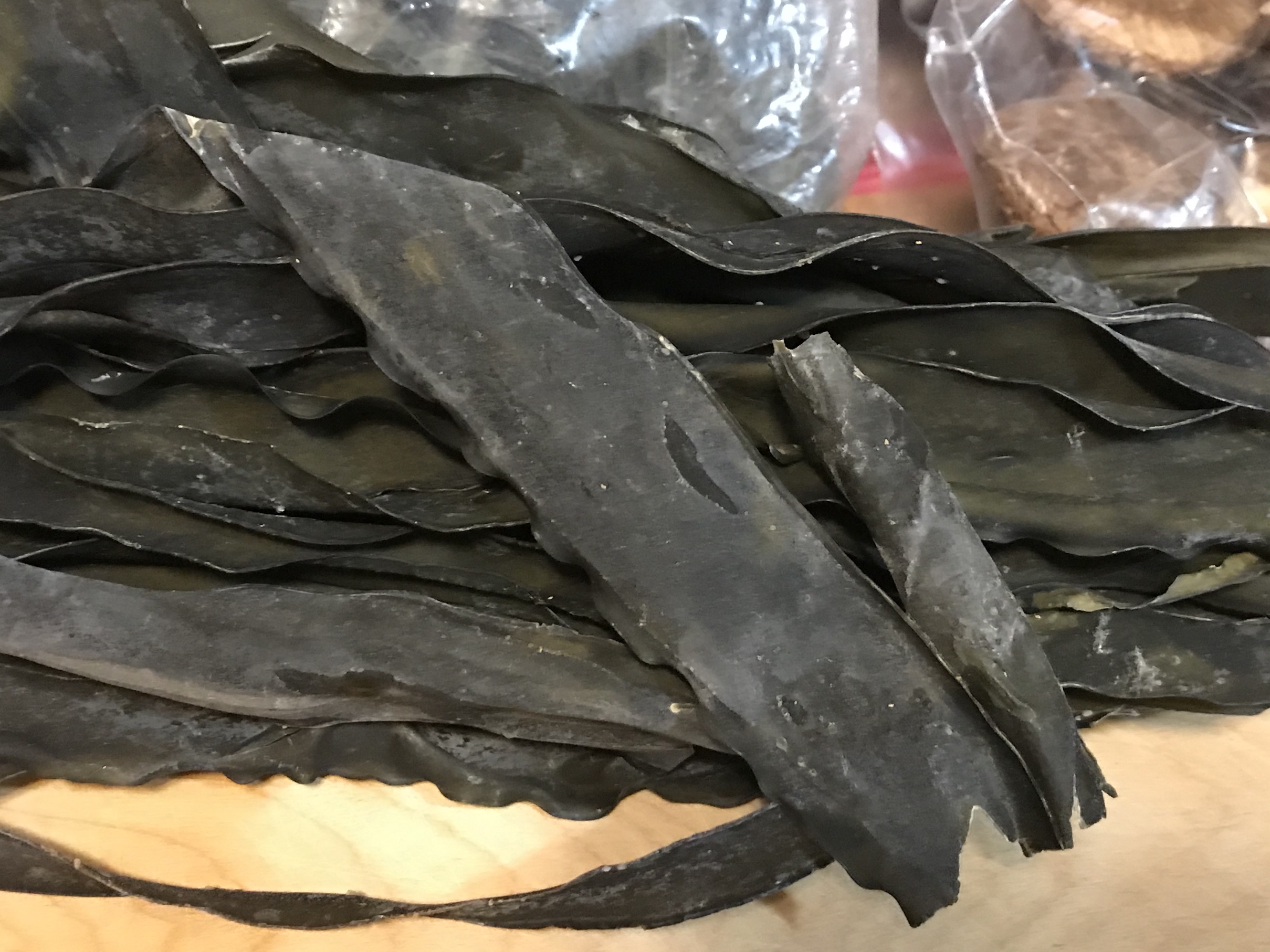 We purchase the family pack from Larch at Maine Seaweed which lasts us quite a while!
We purchase the family pack from Larch at Maine Seaweed which lasts us quite a while!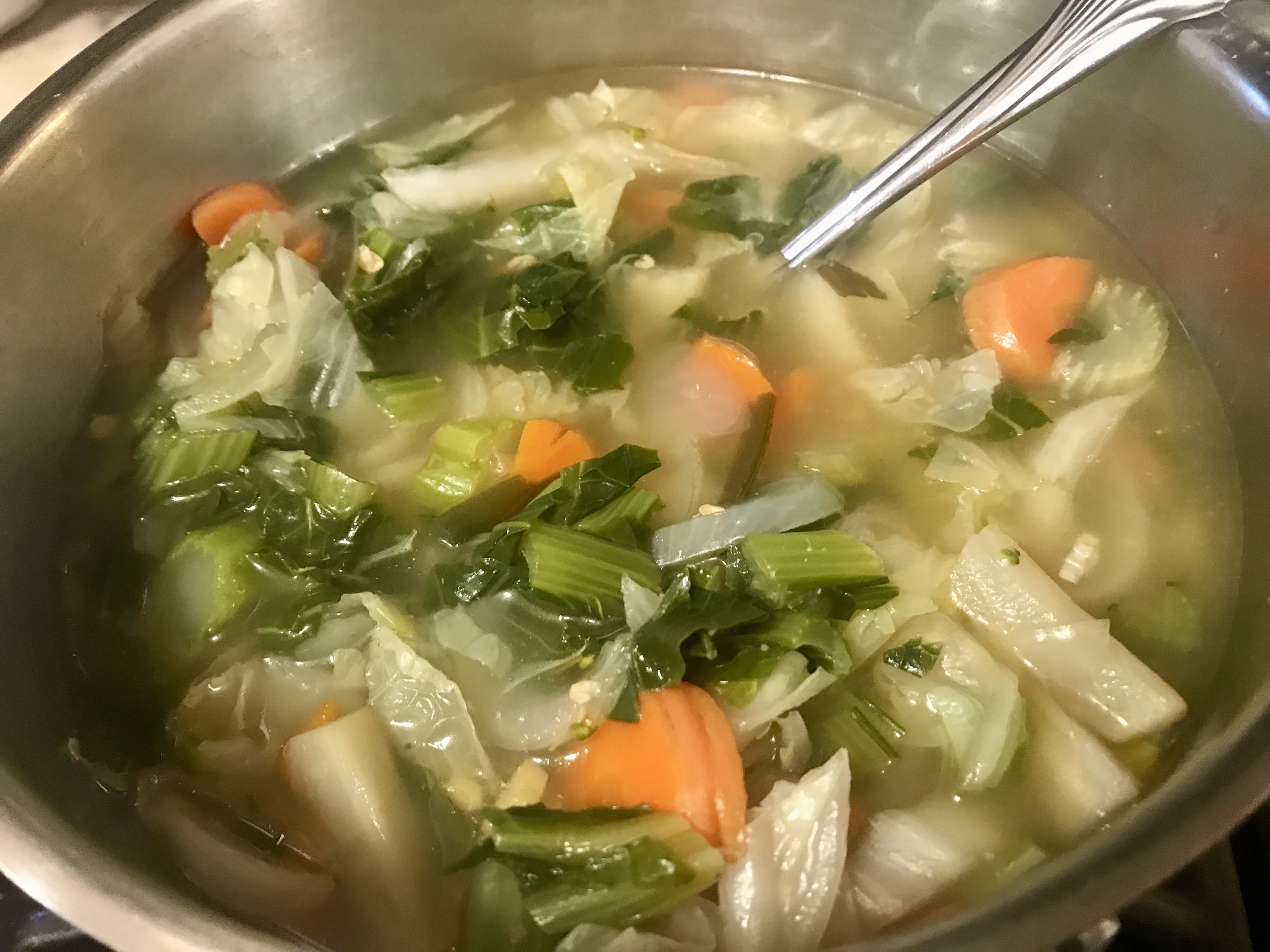 Soup simmering beginning with a basic Japanese Dashi Broth, adding vegetables as outlined below, and stirring in miso at the end of cooking
Soup simmering beginning with a basic Japanese Dashi Broth, adding vegetables as outlined below, and stirring in miso at the end of cookingSeaweeds are a nutrient-rich food source, with many health benefits. There are many varieties of red, green and brown seaweeds with varying nutritional compositions, however they tend to be good sources of vitamin A, several B vitamins, and vitamins C, D, E and K; important minerals, including calcium, iron, iodine, magnesium, potassium, zinc, copper, selenium, manganese and fluoride, along with essential amino acids, fiber, and antioxidant-rich polyphenols.
Seaweed has been shown to have anticancer / antitumoral activity against certain types of cancers. One cohort study investigated associations between pretreatment intake of 6 Japanese foods including soy food, miso soup, and seaweed and the risk of death among patients with confirmed stomach, colon or rectal cancers. Frequent intake of both soy foods and miso soup were inversely associated with the risk of all-cause and stomach cancer death; meanwhile, intake of seaweed tended to have a lower risk of rectal cancer deaths, concluding that, "pre-treatment intake of Japanese foods such as soybean products and seaweed may have favorable effects on patient survival of stomach and colorectal cancer, although this needs to be confirmed by further research."
Another study focusing on breast and colorectal cancer looked at compounds extracted from a variety of seaweeds shown to, "eradicate or slow the progression of cancer."
This study done on rats comparing the use of Tomoxifen and red seaweed, Eucheuma cottonii L. (ECE), found that, "The ECE was more effective than tamoxifen in suppressing tumor growth (27%), improving tissues (plasma, liver, and kidney) malondialdehyde concentrations, superoxide dismutase activity and erythrocyte glutathione concentrations (P < 0.05). Unlike tamoxifen, the ECE displayed little toxicity to the liver and kidneys. The ECE exhibited strong anticancer effect with enzyme modulating properties, suggesting its potential as a suppressing agent for mammary gland tumor."
In Chinese medicine, seaweed is used to 'soften masses' such as nodules, and drain excess dampness.
Henry C. Lu writes in his book, Chinese Foods for Longevity, The Art of Long Life that Seaweed:
"Softens up hard spots, disperses congestion, reduces internal heat, promotes urination, suppresses coughs, removes fat, reduces high blood pressure; used for edema, goiter, and tumors."
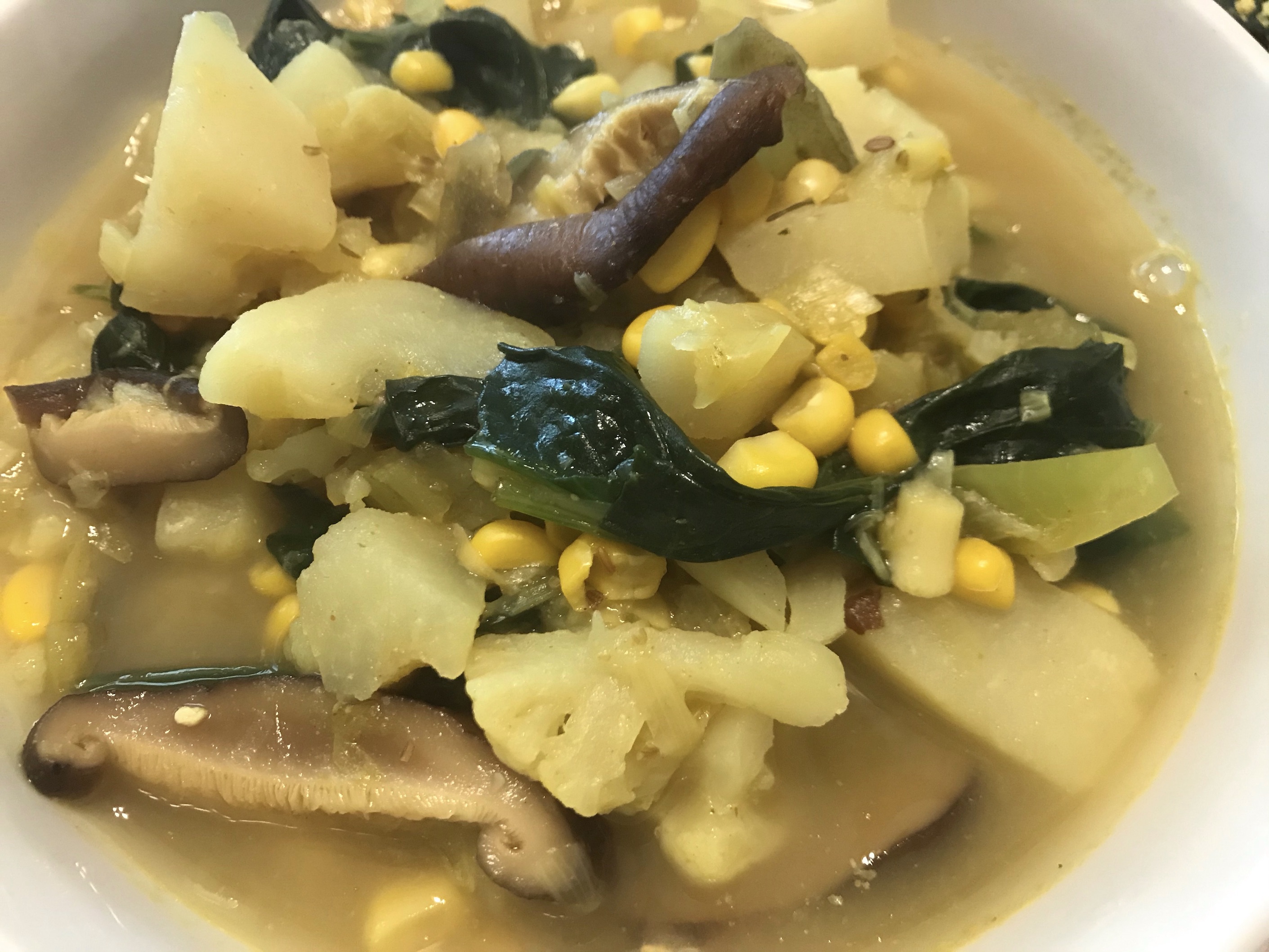 A nice light Spring / Summer Miso Soup with cauliflower, sweet corn & shiitake mushrooms in a Dashi Broth with South River Sweet White Miso
A nice light Spring / Summer Miso Soup with cauliflower, sweet corn & shiitake mushrooms in a Dashi Broth with South River Sweet White Miso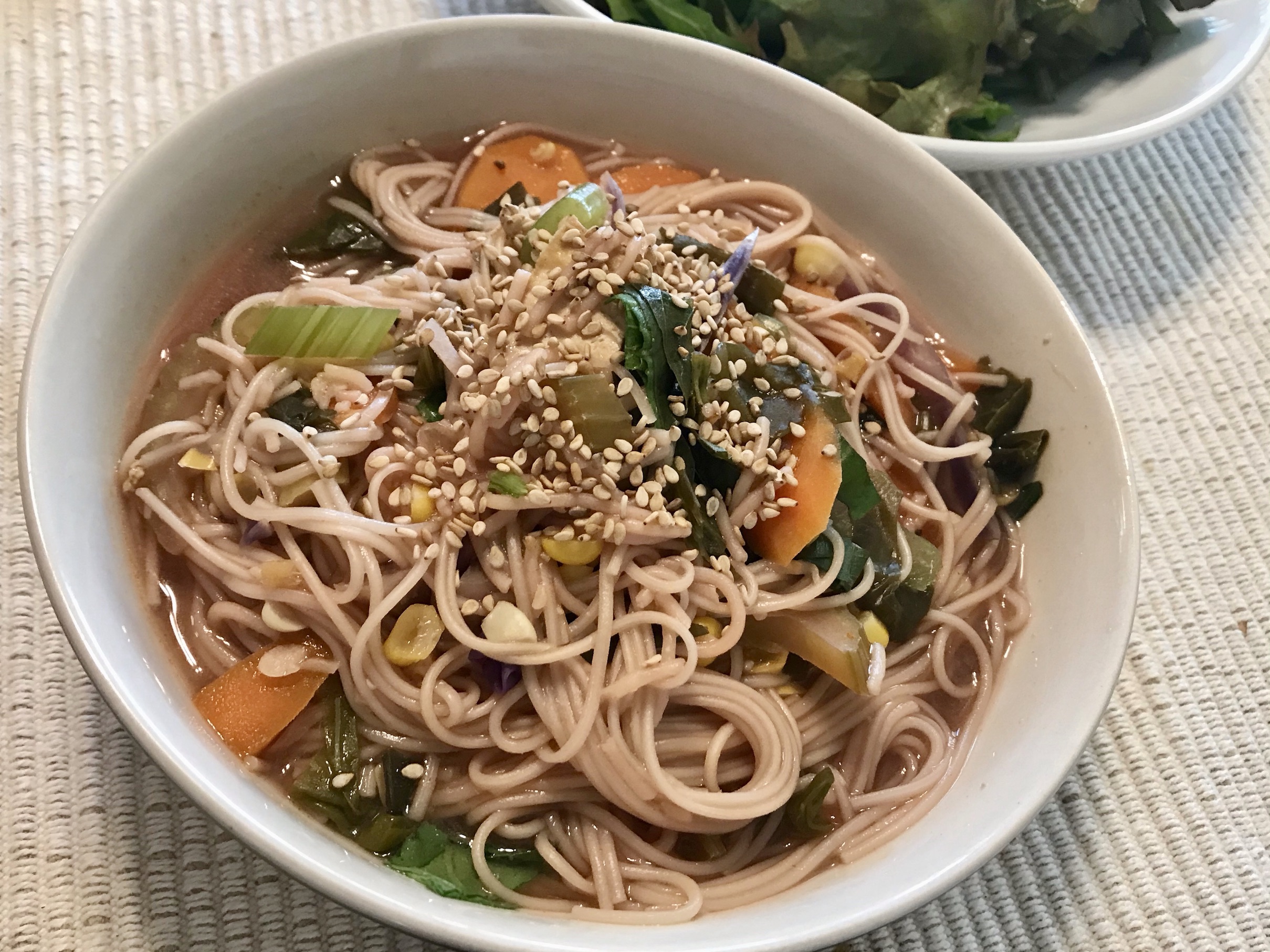 Japanese Dashi Broth with Somen Noodles & Vegetables
Japanese Dashi Broth with Somen Noodles & Vegetables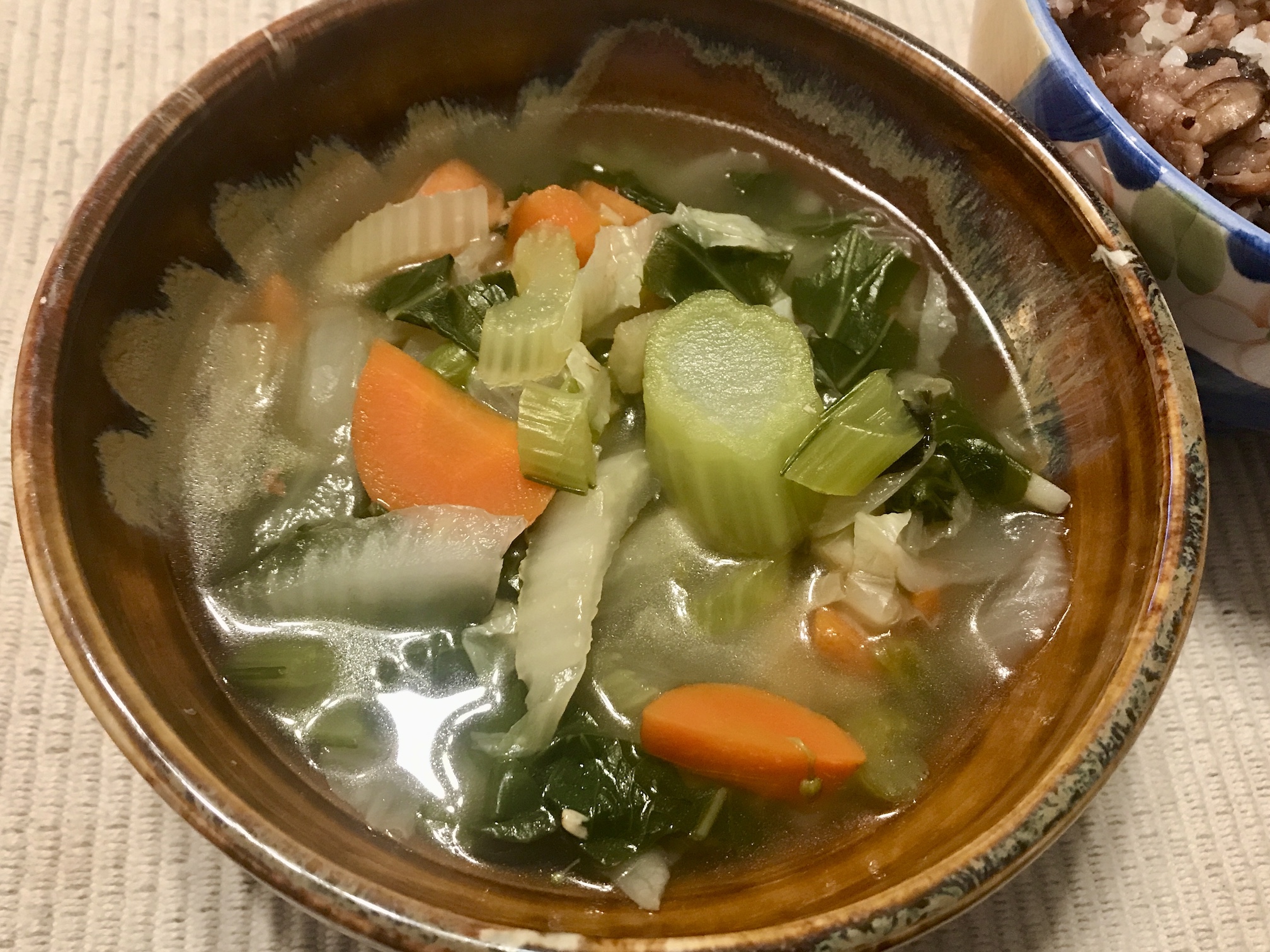 Miso Soup in Japanese Dashi Broth with Asian Greens, Napa Cabbage, Carrot, Celery, Onion, Ginger; South River Brown Rice Miso & Gouchujiang stirred in at the end
Miso Soup in Japanese Dashi Broth with Asian Greens, Napa Cabbage, Carrot, Celery, Onion, Ginger; South River Brown Rice Miso & Gouchujiang stirred in at the endA Few Health Benefits of Fresh and Dried Shiitake Mushrooms
Shiitake mushrooms are used medicinally, as part of Chinese food therapy, as they contain many antioxidants, amino acids, B vitamins, magnesium, potassium, selenium, folic acid and other nutrients, and can help lower blood pressure, boost immunity, and may also ~ like soy, miso and seaweed ~ have anticancer properties.
In vitro studies have found that lentinan, a poylsaccharide isolated from shiitake mushrooms, has anticancer effects in colon cancer cells.
A simple, basic Dashi Broth will take your cooking up a notch, adding flavor, nutrients, and versatility to your cooking repertoire. Plus, if trying to reduce sodium, you can enjoy a salty flavor without using sodium chloride, aka, salt.
Regular consumption of this simple Japanese Dashi broth, made into a delicious Miso Vegetable Soup with Tofu as prescribed in many macrobiotic diet circles can help reduce risk of several cancers, suppress tumor growth, and up your intake of immune-boosting antioxidants, polyphenols and other important nutrients, including calcium, vitamin A, C, and E, and iodine for those on low-salt, and salt-free diets.
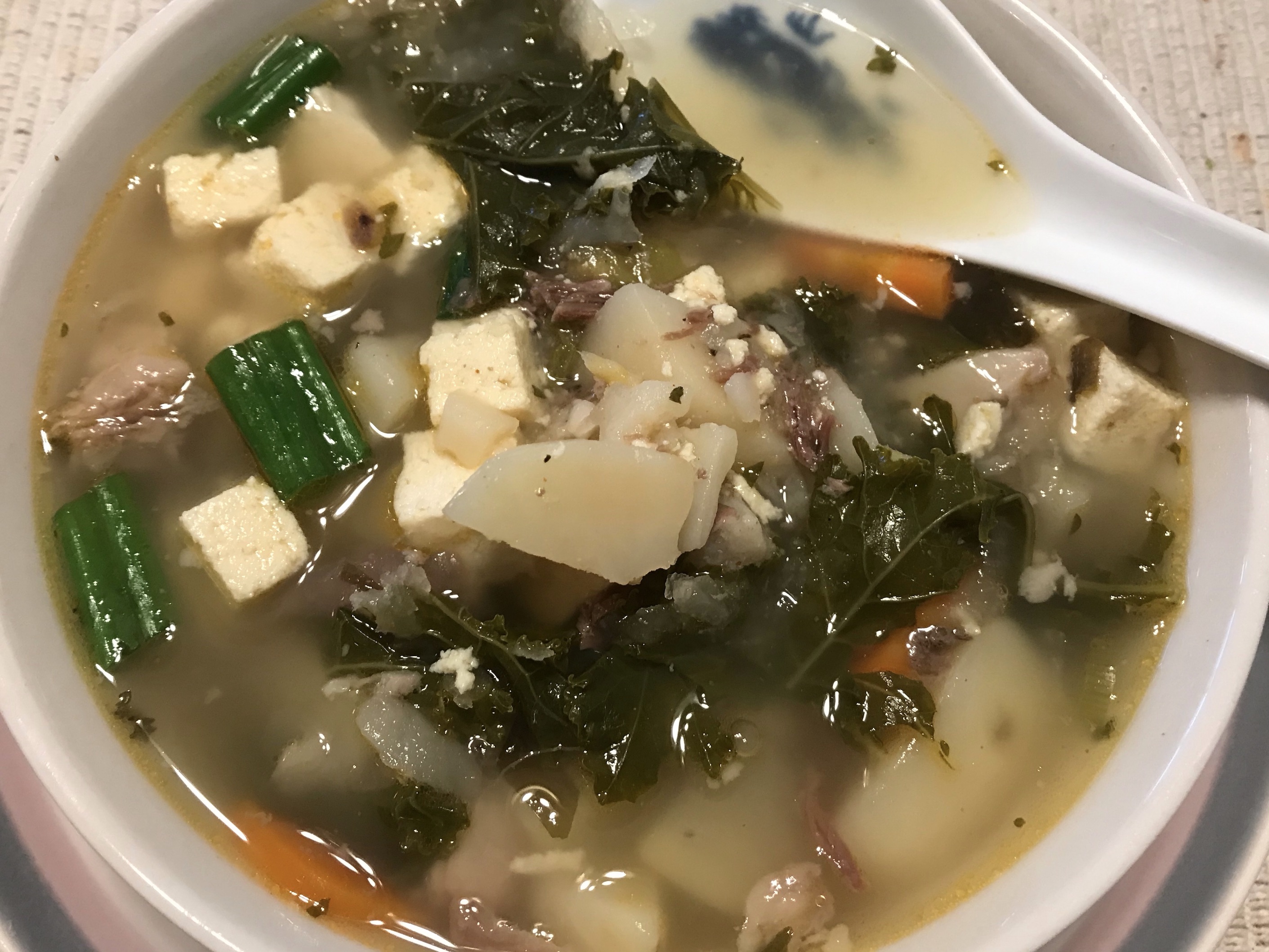 Tofu, Potato & Kale Miso Soup in a Japanese Dashi Broth
Tofu, Potato & Kale Miso Soup in a Japanese Dashi Broth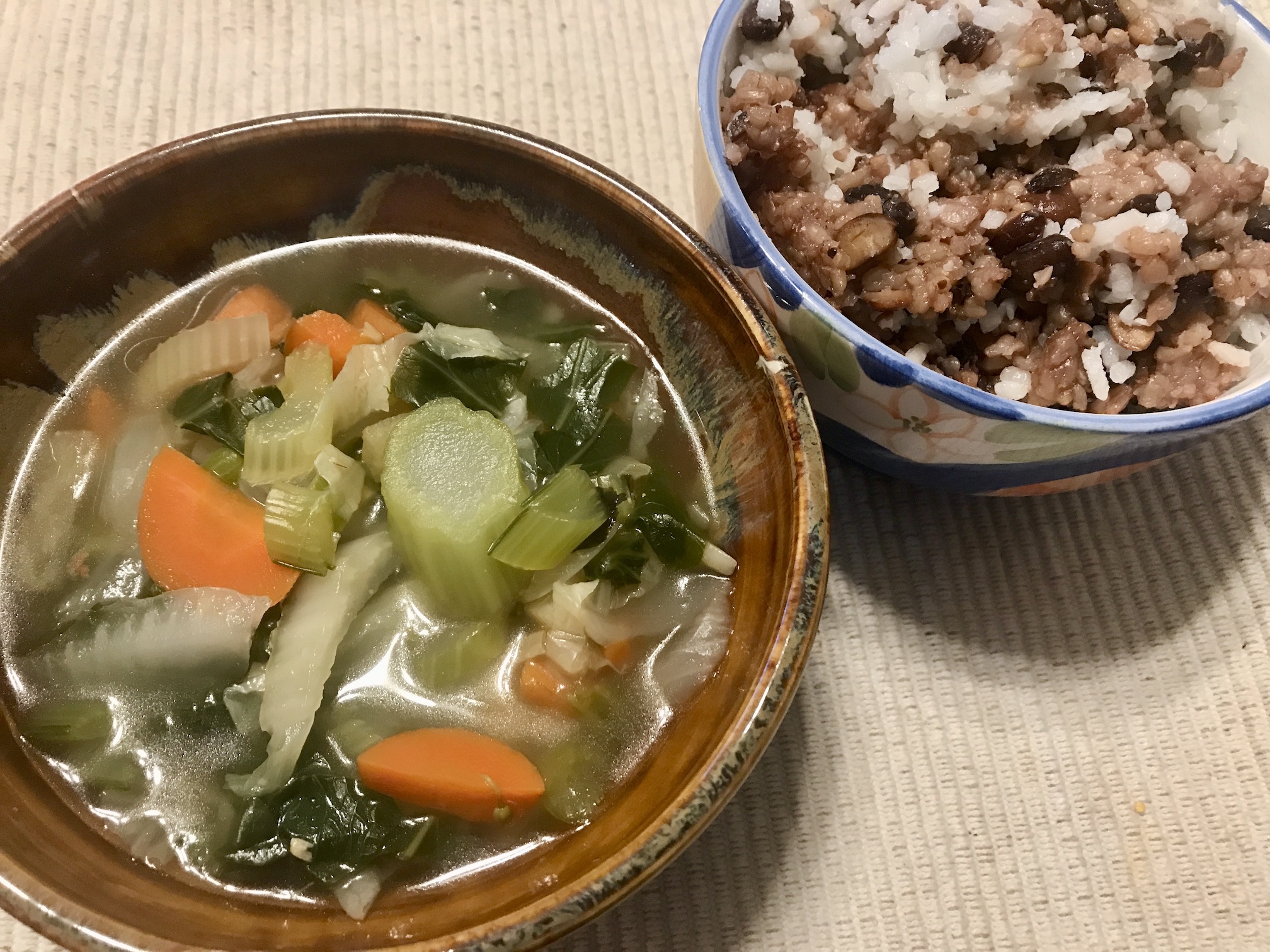 Miso Vegetable Soup with Lundberg Short Grain Brown Rice cooked with Roasted Black Soy Beans, reheated for breakfast with a little leftover White Rice
Miso Vegetable Soup with Lundberg Short Grain Brown Rice cooked with Roasted Black Soy Beans, reheated for breakfast with a little leftover White RiceExtra optional ingredients I sometimes add to my Simple Japanese Dashi Broth
Warm It Up with Ginger
Since seaweed is considered to have a cold nature, I warm it up by adding a few thin slices of warming ginger to my Dashi Broth. Ginger also aids digestion. I add a couple thin slices, or minced ginger to all my dashi broths. You can also add a couple pinches of dried ginger. Dried ginger is even more warming, so I tend to add this more during the colder months.
Scallion Greens
I also like to keep the green parts of scallions or leeks in a container (along with other parts of vegetable typically discarded, including corn cobs which add a sweet flavor to the broth) to add to my Dashi Broth as they impart a really nice flavor. If I happened to steam or blanch vegetables, I add the cooking water as well.
Citrus Peel / Chen Pi
Occasionally, I may add a small piece of dried / aged citrus peel, which helps 'move the Qi.' Read more about Chen Pi, or citrus peel in My Healthy Tea post.
Once you see how easy it is to prepare, you can get into the habit of making a Dashi Broth as part of your weekly plant-based meal prep.
Simple Japanese Dashi Broth Recipe
Japanese Dashi Broth INGREDIENTS:
- 4 cups filtered water
- 2-3 thin ginger slices
- 2 dried shiitake mushrooms (Available at Asian markets, Or See Resources)
- 1 3-4 inch piece of kombu or kelp, (See Resources, below for our Seaweed source)
- 1-2 whole scallions, or just the ends or tips that you normally discard (Save in a container for this purpose!), optional
Traditional Japanese Dashi Broth Steps:
The classic way to make Dashi Broth is to bring the water and seaweed just to a boil. Turn off heat, but let kombu (or kelp) steep for about 10 minutes. Remove seaweed with a Spider Strainer (this is the one we use) or a slotted spoon.
My Simple Dashi Broth Steps:
- Place water, seaweed (cut or torn into smaller pieces), mushrooms, ginger and scallion parts, if using, in a pot. Gently bring to a boil, then reduce heat to medium-low and simmer for about 10-15 minutes. Strain ingredients, or any discard parts of scallions. You can keep the seaweed and shiitake mushrooms in the soup to eat, or remove and discard ~ possibly adding to your garden mulch pile. (See steps 2 & 3.)
- If eating the mushrooms, carefully remove the shiitake mushrooms to a cutting board. Remove stem (which is usually pretty chewy), and slice or cut mushrooms in halves or quarters. Return to the pot.
- Alternatively, you can presoak the mushrooms (and seaweed for that matter) in a small bowl covered in water (or directly in the pot) for about 30 minutes before turning the heat on. Once soft enough, trim the stems, and slice or cut, then return back to the pot. Proceed with making the Dashi broth. The mushroom soaking water adds to the flavor. Add any other vegetables you would like to include in your Miso Soup, if making, or save broth in a jar in the fridge until ready to use. (Once you get in the swing of making this Simple Japanese Dashi Broth as a base for other soups, you'll see which way is easiest for you. I tend to cut the mushroom while hot, but that may not be the safest or easiest for everyone.)
NOTES:
- Dried shiitake mushrooms have a chewier flavor than fresh. Keep or discard as per your taste preferences.
- Sub fresh shiitake mushrooms for the dried.
- Save discarded parts of vegetables, like the root or green parts of scallions or leeks, celery leaves, corn cobs, etc., in a container in the fridge, or in a ziplock baggie in the freezer, then add to your Dashi Broth for more flavor, less waste!
- To intensify the flavor, you can let it simmer longer to reduce the volume while preparing the rest of your meal, just like making a veggie stock.
- I sometimes use the broth water from cooking Quick Blanched / Boiled vegetables, pasta cooking water, and/or aquafaba along with or instead of filtered water. If I don't save the cooking water, I try to at least water our vegetables in the garden with it! (I don't like throwing that fortified water down the drain!)
- If I'm making a soup or stew which requires sautéing or pan frying vegetables first, I start it in a separate pan or pot while the Dashi Broth simmers, then add it to the dashi broth.
- Dashi can be stored in a jar in the fridge, for up to a week. You could freeze some as well, although it's so simple to make, I suggest making it fresh as you need it.
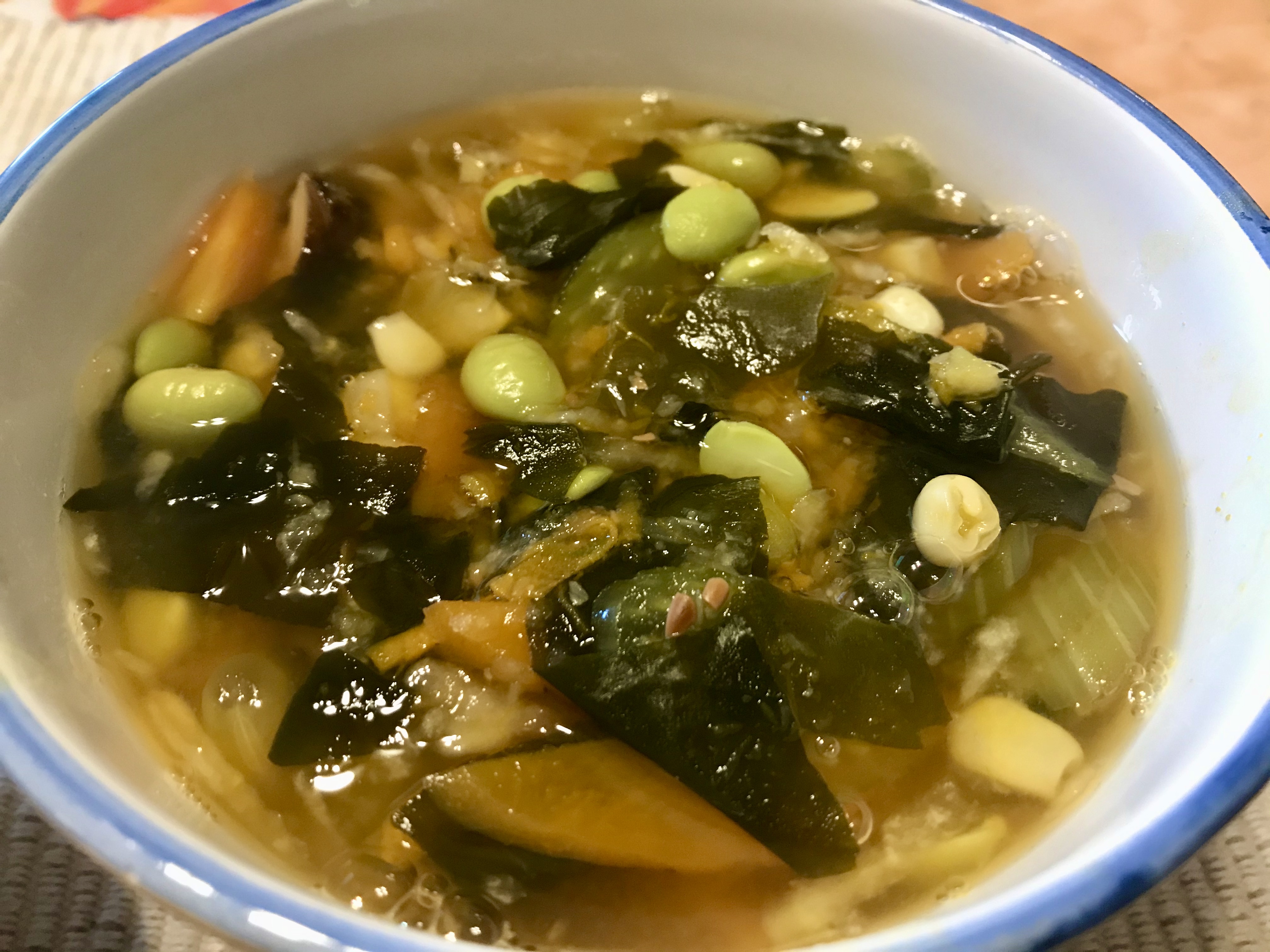 Simple Japanese Dashi Broth becomes a delicious Miso Vegetable Soup, fortified with Edamame ~ all shown in studies to have cancer protective properties (seaweed, soy & miso)
Simple Japanese Dashi Broth becomes a delicious Miso Vegetable Soup, fortified with Edamame ~ all shown in studies to have cancer protective properties (seaweed, soy & miso)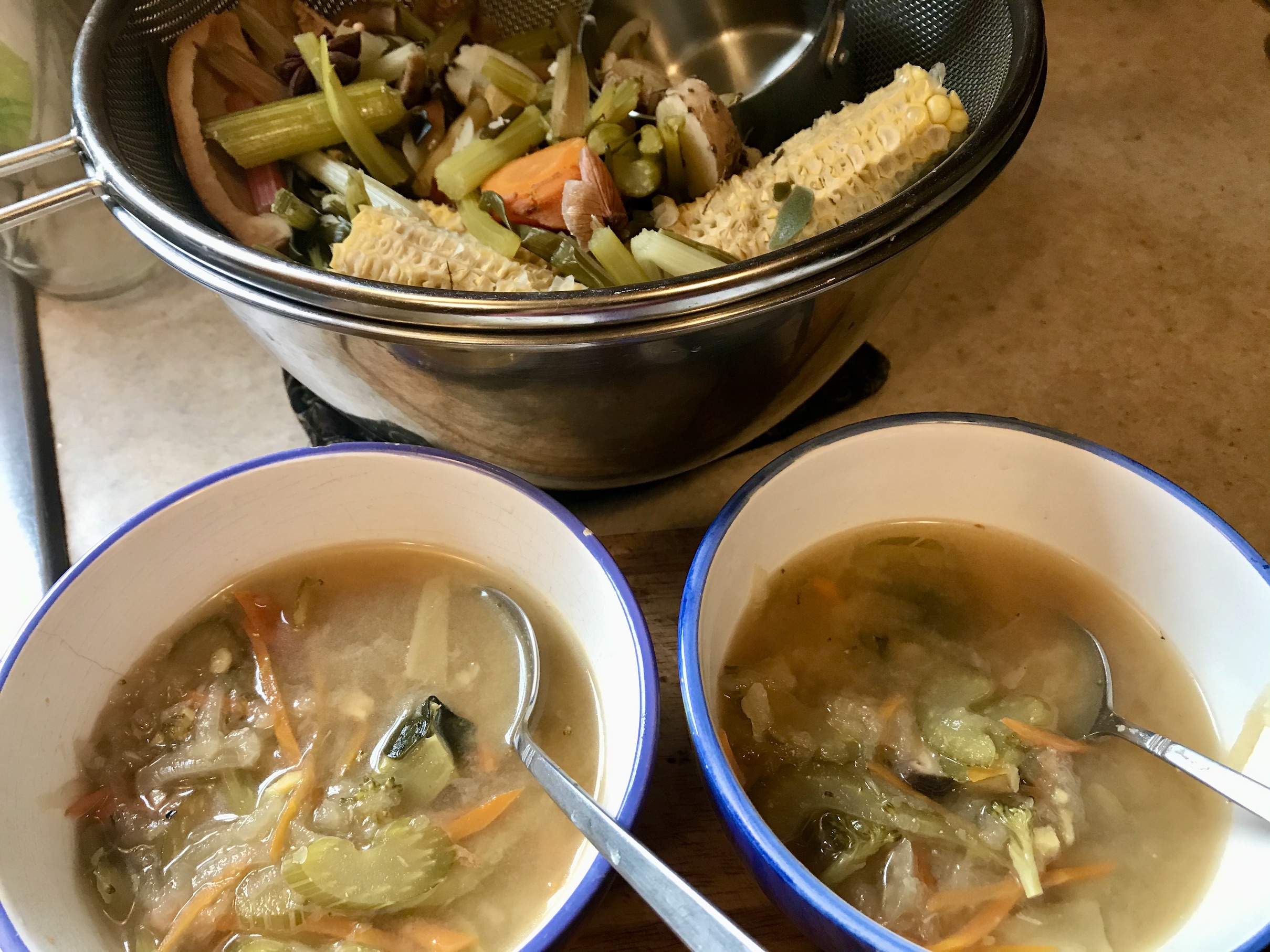 You can make a veggie stock similarly to a Dashi Broth by adding vegetable discarded parts, and letting it simmer in water with seaweed, dried shiitake mushrooms, ginger & optional citrus peel
You can make a veggie stock similarly to a Dashi Broth by adding vegetable discarded parts, and letting it simmer in water with seaweed, dried shiitake mushrooms, ginger & optional citrus peelSimple Soup Recipe Ideas Using Dashi Broth
Miso Vegetable Soup
Add sliced / chopped vegetables, and / or tofu cut into cubes to the broth. Add an additional pinch of dried ginger if desired. Simmer until they vegetables tender. Stir in about 1 teaspoon of miso per serving directly into the pot, or, pour a ladle of broth into individual serving bowls. Stir miso in until combined. Top off with more soup. Add Sriracha, or Korean Gouchujiang as desired, or garnish with sliced scallions and/or ground black sesame seeds.
Good vegetables to add to miso soup include: carrot, celery, sweet onion, daikon radish, baby bok choy, thin sliced napa cabbage, any other cabbage, and corn which provide sweetness are among our favorites.
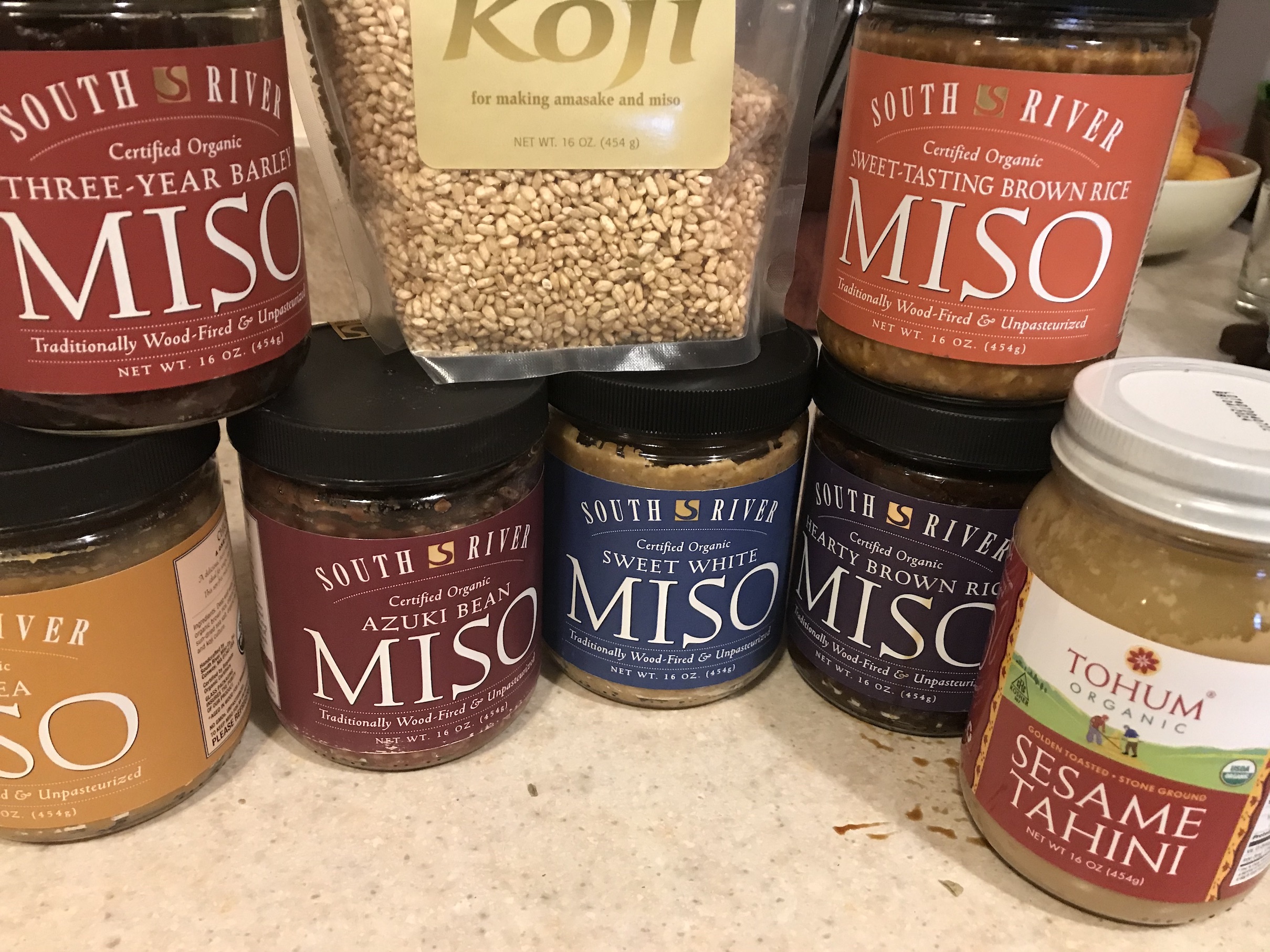
Miso comes in a variety of styles / flavors. They are made by fermenting soybeans and / or whole grains with a koji starter, and aged for differing lengths of time, with three year miso being quite good. Some lighter / sweeter miso is fermented for shorter time periods.
It's nice to have 2-3 types on hand ~ a mild, white or sweet miso is great for dressings, lighter / sweeter soups, or to add to hummus dips; barley or red miso is darker, richer and more savory with a higher sodium content.
South River Miso is our favorite. We purchase in bulk to save on shipping. Miso will keep in your fridge for a long time, and a little goes a long way. It's an investment that will last, and pay dividends in not only your health, but in how much time you'll save using it in lieu of making homemade vegetable stock or broth ~ aside from this Simple Japanese Dashi Broth!
Other good Miso brands include Miso Master, Eden, Hikiri Organic, Ohsawa Barley or Brown Rice Miso, Clearspring Japanese Barley Miso, to name our top choices. Be sure to avoid any miso containing additives.
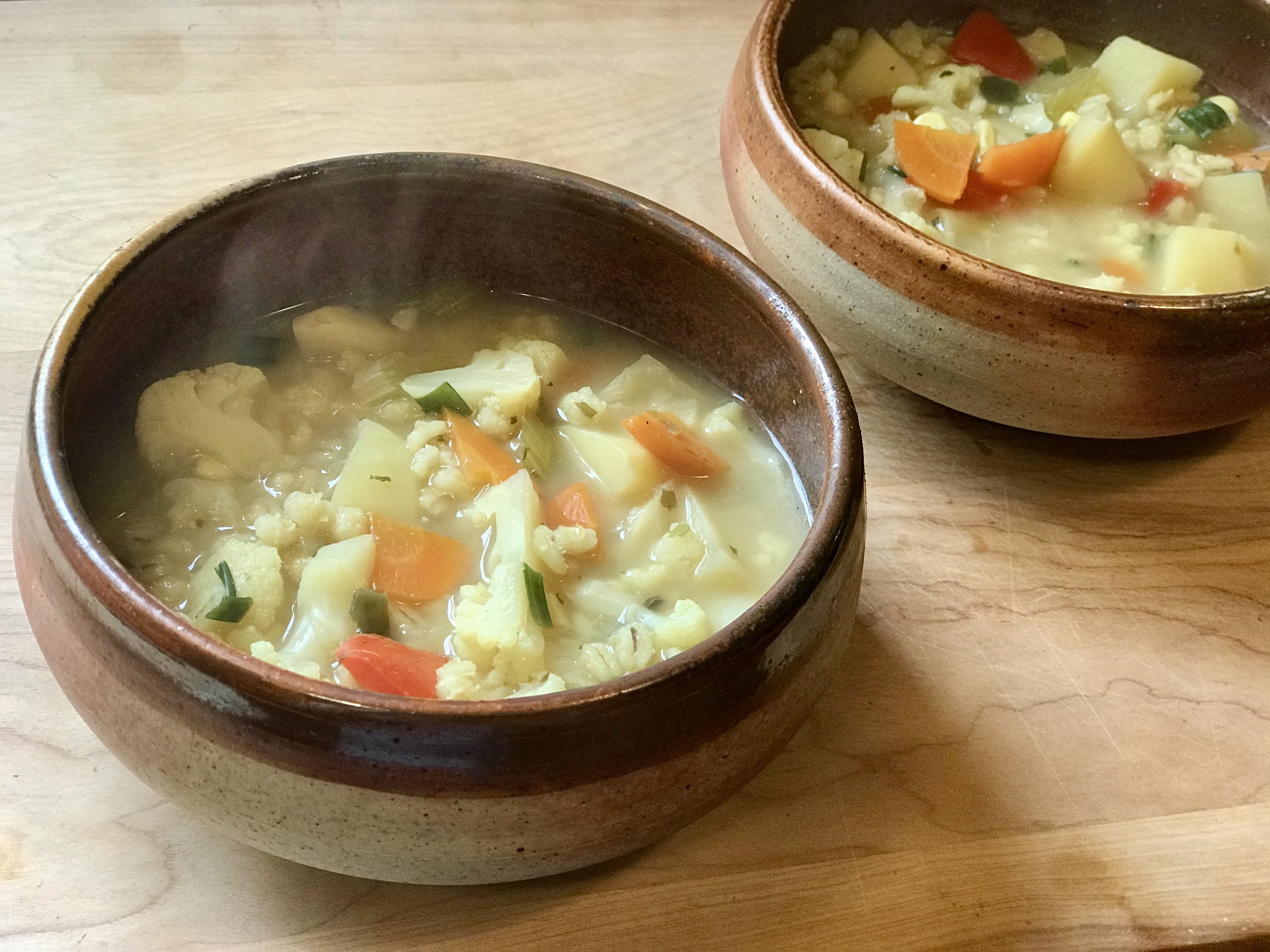 Barley Vegetable Soup with a Mild, Sweet White Miso ~ still made with seaweed added
Barley Vegetable Soup with a Mild, Sweet White Miso ~ still made with seaweed added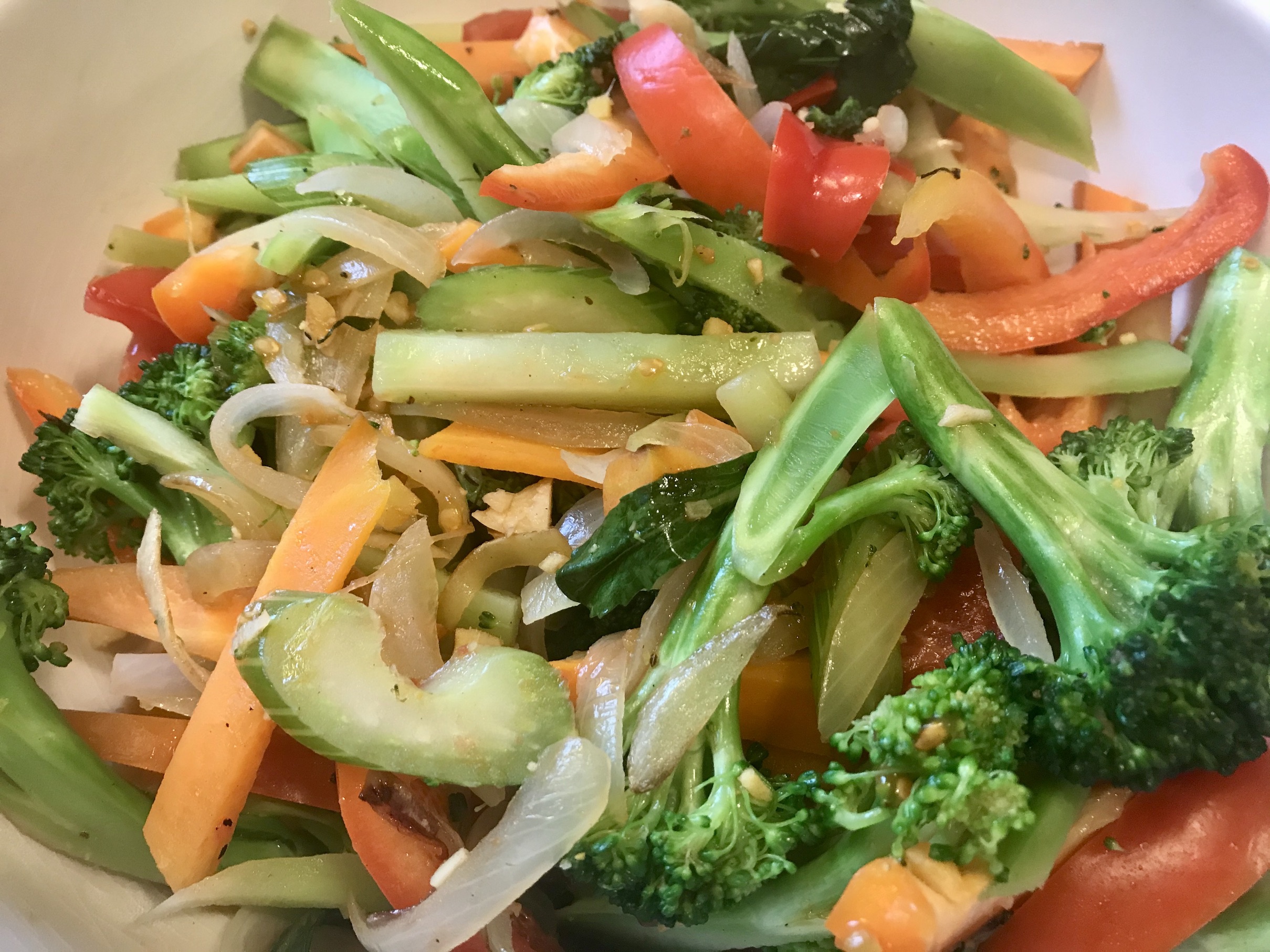 Noodles & Veggies can be placed in a shallow soup serving bowl, with Japanese Dashi Broth flavored with Miso, and possibly a little Tahini or Peanut Butter on top, as outlined, below
Noodles & Veggies can be placed in a shallow soup serving bowl, with Japanese Dashi Broth flavored with Miso, and possibly a little Tahini or Peanut Butter on top, as outlined, below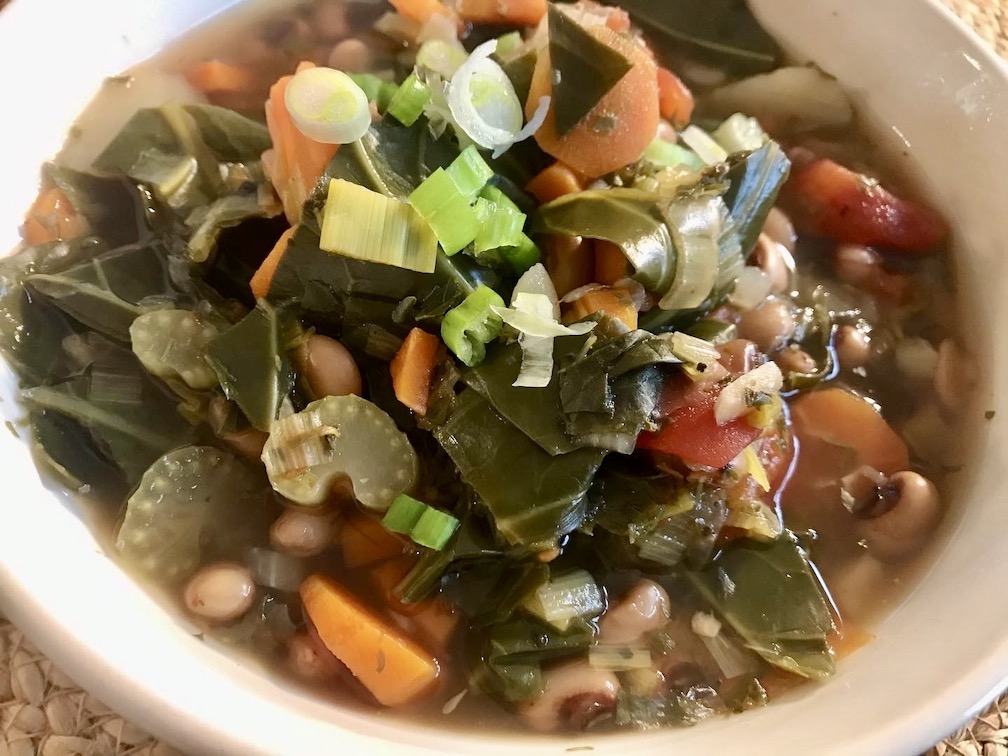 Basic Dashi Broth turns into a New Years Day classic, allegedly to bring good luck and prosperity ~ Black Eyed Pea Soup
Basic Dashi Broth turns into a New Years Day classic, allegedly to bring good luck and prosperity ~ Black Eyed Pea SoupAsian Tofu Vegetable Noodle Soup
Add any chosen sliced or chopped vegetables and 1/4-1/2 a brick of tofu, cut into cubes to the Japanese Dashi Broth, and simmer until vegetables are tender.
Separately, prepare noodles according to package instructions. I like Japanese Soba Noodles, made from buckwheat flour, or Udon Noodles, both of which are tender and cook fast, ideal for a big slurp bowl of Asian Tofu Vegetable Noodle Soup! You could also use any type of ramen noodle, including gluten-free varieties made with millet, rice, or any other noodle of choice.
Using one of your serving bowls, add 1/2 - 1 teaspoon of miso paste per serving and about 1 tablespoon of peanut butter or tahini, along with a teaspoon of Gochujang Korean fermented chile sauce (I like Mother In Law's Gochujang.) Pour a ladle full of soup into the bowl, then stir or mash with the back of a spoon until the miso and nut/seed butter have all been combined. Add back to the pot, and simmer one more minute on low.
Place noodles in serving bowls, ladle Tofu Vegetable Dashi Broth on top. Garnish with sliced scallions, and/or ground black sesame seeds.
Dashi Broth can be used as a base stock for many dishes. I sometimes add some to my Veggie Spaghetti Marinara Sauce, or any other soups or bean dishes.
Resources
Our primary source for seaweed is Maine Coast seaweed. Don spent one summer helping Larch harvest. You can order from the links below, or go directly to his website, TheSeaweedMan.com. Be sure to let him know Don (and Tracy) sent you!
For a variety of Miso selections, check the Amazon link to see those I most recommend.
Or visit Miso Masters, or South River Miso, or absolute favorite (not an affiliate link.)
>>>Simple Japanese Dashi Broth & Miso Soup >>>Return to Home Page
>>>Perfectly Cooked Brown Rice + How To Use Leftovers in Porridge, Sushi++
>>>My Top Recommended Condiments for Savory Plant-Based, Macrobiotic Cooking
For more soups, you may also like any of these, below:

